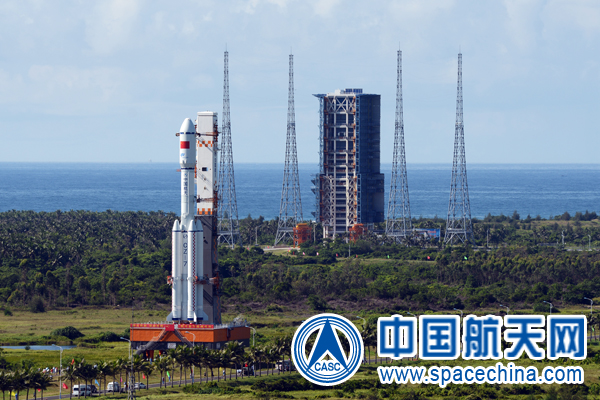China's new Long March 7A rocket fails in debut launch: reports

The first flight of China's new Long March 7A rocket apparently didn't go well.
The next-gen booster failed today (March 16) on its debut mission for the China National Space Administration, which aimed to loft a classified satellite to geosynchronous transfer orbit (GTO), according to SpaceNews, which cited a Chinese-language report from a state news agency.
The liftoff took place at 10:34 a.m. EDT (1534 GMT) from Wenchang Satellite Launch Center on China's Hainan Island, SpaceNews reported.
The 7A is a modified, three-stage version of China's two-stage Long March 7 rocket, which has two launches under its belt to date, both of them successful.
The Long March 7A "could become China's main rocket for communications satellite missions," Andrew Jones wrote in the SpaceNews story today.
"The modularized, cryogenic rocket could have benefits in terms of cost, but also in reducing threat to life and property," he added. "The older, hypergolic Long March 3B is China’s current workhorse for launches to GTO. The 3B launches from deep inland at Xichang, Sichuan province, resulting in spent stages frequently falling on inhabited areas. The Long March 7A launches from the coastal Wenchang spaceport, meaning its flightpath is over the sea."
China may be flying through the coronavirus outbreak, but rockets have been grounded elsewhere. For example, Europe's chief spaceport, the Guiana Space Center on the northeastern coast of South America, has suspended launch campaigns until further notice, European officials announced today.
Breaking space news, the latest updates on rocket launches, skywatching events and more!
- Coronavirus outbreak shakes space industry: Here's the effects so far
- Coronavirus isn't stopping China from launching rockets
- Latest news about China's space program
Mike Wall is the author of "Out There" (Grand Central Publishing, 2018; illustrated by Karl Tate), a book about the search for alien life. Follow him on Twitter @michaeldwall. Follow us on Twitter @Spacedotcom or Facebook.
OFFER: Save at least 56% with our latest magazine deal!
All About Space magazine takes you on an awe-inspiring journey through our solar system and beyond, from the amazing technology and spacecraft that enables humanity to venture into orbit, to the complexities of space science.

Michael Wall is a Senior Space Writer with Space.com and joined the team in 2010. He primarily covers exoplanets, spaceflight and military space, but has been known to dabble in the space art beat. His book about the search for alien life, "Out There," was published on Nov. 13, 2018. Before becoming a science writer, Michael worked as a herpetologist and wildlife biologist. He has a Ph.D. in evolutionary biology from the University of Sydney, Australia, a bachelor's degree from the University of Arizona, and a graduate certificate in science writing from the University of California, Santa Cruz. To find out what his latest project is, you can follow Michael on Twitter.

